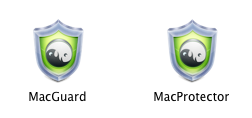![]() As if we didn’t have enough to deal with this week — after a Microsoft patch Tuesday that brought with it a boatload of security updates for Windows, Office, Silverlight, Visual Studio, and other programs — some enterprising malware distributor is emailing around bogus tracking number malware dressed up in the icon of a PDF document, and that malware is downloading payloads named after the updaters that Windows Update retrieves during an update.
As if we didn’t have enough to deal with this week — after a Microsoft patch Tuesday that brought with it a boatload of security updates for Windows, Office, Silverlight, Visual Studio, and other programs — some enterprising malware distributor is emailing around bogus tracking number malware dressed up in the icon of a PDF document, and that malware is downloading payloads named after the updaters that Windows Update retrieves during an update.
The malware arrived into one of our spam collection points with an attachment named UPS_document.zip. Way to be original there, criminals. Inside the Zip file was an executable downloader named UPS_Document.exe. Upon execution, it retrieves at least three payloads, including a copy of SpyEye (a password stealing Trojan), a tiny agent sending profiling information about the infected system, and a fraudulent “rogue system utility” called (on my XP testbed) Windows XP Restore.
The rogue takes on much of the appearance of a previous Rogue of the Week, named Windows Recovery. In fact, Windows XP Restore looks to be a very slightly modified duplicate of that software. If you’ve been hit with either rogue, there are some cool free tools for you to download that will repair some of the damage; Read on for details.
















































